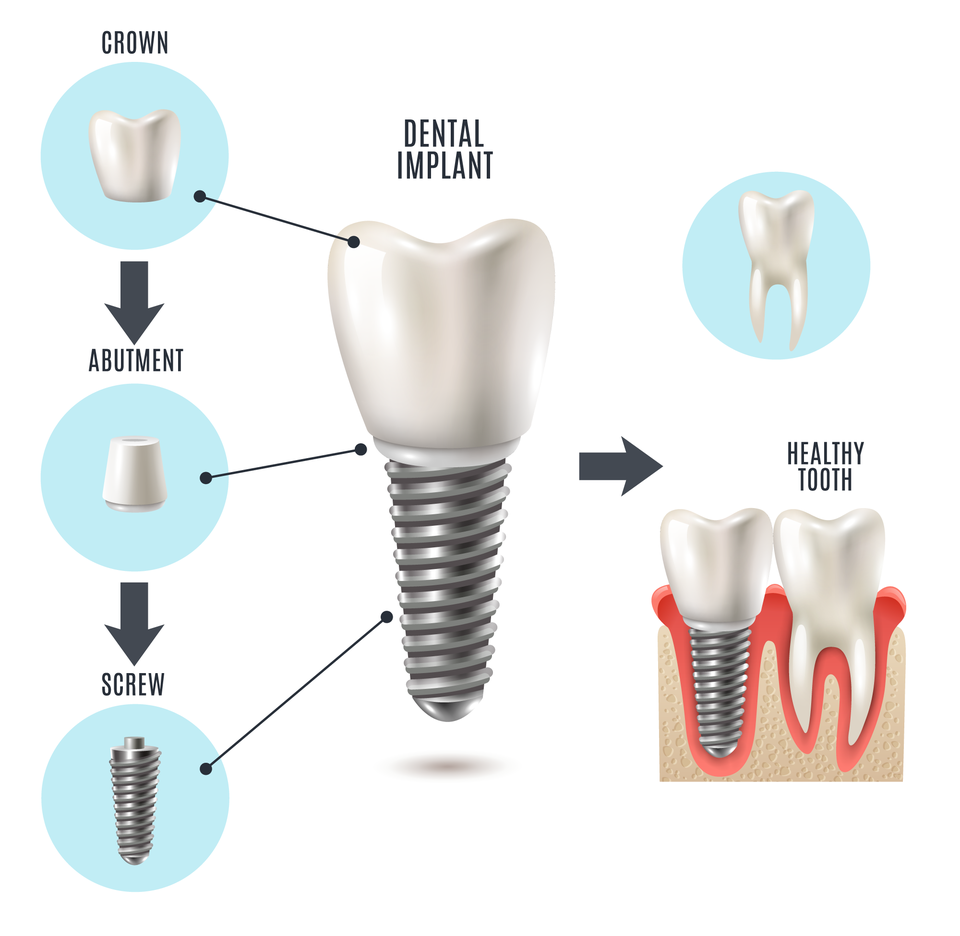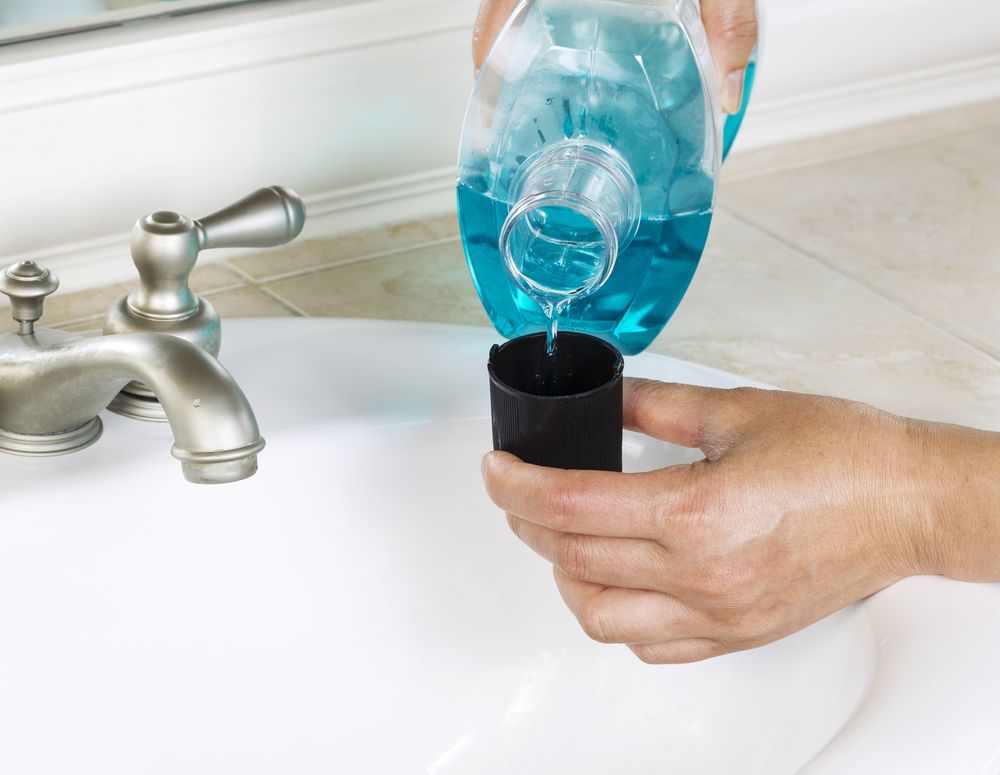Safe, Accurate Dental Implant Placement by a Board-Certified Periodontist
Patients suffering from tooth loss may not only struggle with eating or speaking but are also at risk for significant oral health issues. We highly recommend that patients replace missing teeth as soon as possible and invest in dental implants. In combination with custom restorations, implant posts can restore full form and function to your smile and advance your dental health. During treatment, we can embed dental implants in the jawbone, where they will become a permanent foundation for a dental crown, bridge, or denture. As a board-certified periodontist in Meridian, MS, Dr. J. Eric Herrington can place dental implants safely and precisely to ensure long-lasting results. We offer both traditional and All-on-4® implants, which can restore patients’ smiles in as little as one appointment.
What Are Dental Implants?
Dental implants are titanium posts that are surgically placed into the jawbone. These posts serve as an anchor for restorations designed by your dentist, including dental crowns, bridges, or dentures. Each dental implant acts as a surrogate tooth root which, when paired with a custom restoration, restores the entire natural tooth structure. In addition, dental implants stimulate the jawbone with each bite you take, preserving your facial structure and preventing bone degeneration.
Traditional vs. All-on-4 Implants
Traditional dental implants require healthy, ample jaw tissue. If you have waited a long time to address lost teeth, it is likely that you have suffered significant bone atrophy. As a result, you may not qualify for traditional dental implants unless you undergo bone grafting, a process of augmenting the jaw with donor tissue. Fortunately, All-on-4 dental implants can help many patients experience the benefits of implants without having to undergo preparatory surgeries. To achieve this, two of the four implants are positioned at an angle to maximize surface contact with available tissue.
All-on-4 implants can replace an entire arch of teeth using only four dental implants. As a result, this treatment is generally more affordable than an implant-supported denture, which often requires six to eight implants for optimal stability. Immediately after All-on-4 placement, a temporary restoration is attached to the implants. While traditional implants must fully integrate with the jaw before they can support a restoration, All-on-4 can provide an attractive, functional smile after a single appointment. Once the All-on-4 implants have fully integrated with the jaw (about three to six months later), the temporary restoration will be replaced with a permanent denture.

Determining Your Candidacy
Prior to your procedure, you will attend a one-on-one consultation with Dr. Herrington to determine whether you are a candidate for dental implants. He will review your medical history to verify whether you are eligible for surgery. Conditions such as diabetes or autoimmune disorders can interfere with the healing process and diminish the likelihood of a successful treatment.
Not only can Dr. Herrington place your implants, but he can also perform the surgical procedures you may require to improve your candidacy.
Dr. Herrington will then evaluate the structure of your smile to ensure you have sufficient jawbone tissue to support implant posts. If you have suffered jawbone atrophy, you may require a bone graft or sinus lift before receiving dental implants. He will also answer any questions you have and provide you with in-depth information about the treatment process. If you decide to proceed, Dr. Herrington can conduct a radiographic exam which will provide him with a 3-D view of the implant site. This picture will help him plan your treatment appropriately.
Understanding the Treatment Process
For your benefit, Dr. Herrington can perform any preliminary procedures prior to dental implant placement to ensure the highest quality care from start to finish. The procedure for placing dental implants varies depending on each patient’s unique situation. Typically, patients undergoing dental implant treatment can expect many of the following steps:
Potential Preparatory Steps:
- If a damaged or deteriorated tooth is still intact, Dr. Herrington will perform a tooth extraction.
- He will also determine the strength and health of your existing bone tissues in the jaw. A bone graft may be necessary to strengthen the bone and prepare it for implant placement. During a bone grafting procedure, the dentist will source sterile bone tissue material and place it in areas of deficiency. A few months of healing allows your jaw to accept the graft and strengthen.
Implant Placement Procedure:
- Dr. Herrington places the dental implant in the jawbone through a small incision in the gums. Local anesthesia combined with sedatives ensure this process is as comfortable as possible. Most patients report feelings of pressure, but discomfort should be mild.
- A waiting period follows, usually lasting four to six months. This allows your jaw and mouth time to heal and acclimate to the new implant, a process called osseointegration. This ensures the implant will provide permanent, durable support for your restoration.
- After the implant has integrated with the jaw, an abutment (a small connector to join the implant and restoration) is fastened to the implant at the gum line.
- An additional two to three weeks allows your gum tissues around the abutment to heal.
- Your custom restoration is created in a dental laboratory from impressions taken by a member of our team.
- Finally, Dr. Herrington will attach your dental crown, bridge, or implant-supported denture to the abutment and shape and polish as needed.
After Dr. Herrington completes the implant placement procedure, you can eat, drink, and speak as you normally would. Caring for your new implant and crown is just as simple as caring for your natural teeth.

Recovery and Aftercare Tips
Tips to improve your recovery and encourage osseointegration include:
- Use caution around the surgical site, since your gum tissue will be sore and tender for the first few days.
- You may experience sore or tight jaw and facial muscles. This is normal, since the mouth must remain open for an extended period of time during surgery. Patients can take prescribed pain medication from Dr. Herrington, or use over-the-counter pain medication such as ibuprofen, as needed.
- While it is normal for small amounts of blood to appear in the mouth during the first few days of recovery, if you ever experience severe bleeding or pain, contact our office right away.
- The first couple days of recovery can be key to successful implant placement. Patients should not lift anything heavy, run, exercise or bend over for the first 48 hours.
- Keep your mouth clean with routine brushing and flossing, just use care to avoid the surgical site.
- Enjoy a soft diet for the first few days until soreness dissipates.
- After 36 hours, rinse with a simple saline solution to combat infection in the surgical site.
Dental Implant Maintenance
Maintaining dental implants requires very little patient care other than following routine hygiene guidelines. Patients who want the best outcomes possible should focus on maintaining their implants by:
- Brushing and flossing twice daily with a soft-bristled toothbrush and non-abrasive toothpaste
- Rinsing with an antimicrobial mouthwash
- Visiting your periodontist for routine check-ups and cleanings
- Contacting your periodontist if any changes occur
Although dentures and other restorations will eventually need to be replaced, you can expect that your dental implants will last 40 years or longer with the proper care. Dr. Herrington and his team are here to help you experience the longest-lasting benefits and the best possible success through this life-changing restorative dentistry procedure.
Why Choose a Periodontist?
While many dentists can place dental implants, periodontists often have more extensive training and experience performing oral surgery. Additionally, their in-depth understanding of the gums, periodontal ligaments, and surrounding bone and teeth provide them with a unique insight into this procedure. This knowledge can help your periodontist better plan implant placement, to avoid complications.
Dr. Herrington not only has advanced training in dental implant procedures, but has also completed advanced training in IV sedation. At our practice, you can experience a more relaxing treatment option, especially for those patients who have anxiety or fear of dental treatment. Dr. Herrington’s status as a board-certified periodontist and Diplomate of the American Board of Periodontology attests to his pursuit of excellence. Not only can he place your implants, but he can also perform the surgical procedures you may require to improve your candidacy.
Achieve Long-term Tooth Replacement
Dr. Herrington is proud to provide patients with a high-quality solution that will help them restore full dental function. He is dedicated to personalized care, and will do everything he can to accommodate your needs. For patients who qualify, financing your dental implant treatment can mean easy monthly payments through CareCredit®. This option is exclusively for medical expenses such as dental implants. With no interest and short-term financing solutions, CareCredit® gives many of our patients peace of mind when it comes to dental treatments for their health and well-being. To schedule your consultation today, contact us online or call our office at (601) 482-6938.